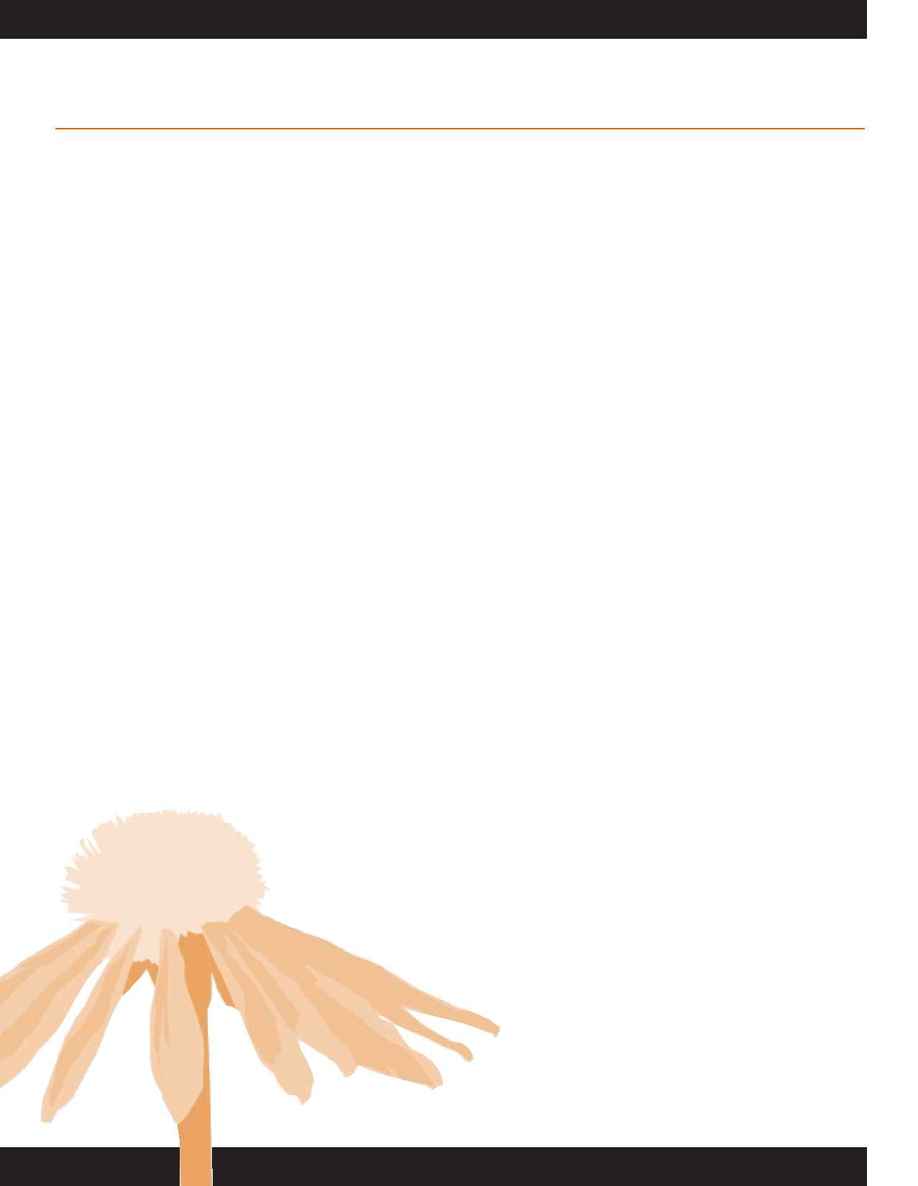
Vol. 9 Issue 4 2002
BIOSIS Evolutions
I
NTERDISCIPLINARY
S
TRENGTH
L
EADS TO
G
RANT
W
ORK
F
OR
I
OWA
R
ESEARCH
C
ENTER
Continued from page 1
biochemistry, molecular biology, botany, horticulture, statistics,
and public health.
The main goals will be to study two botanical dietary
supplement ingredients, Echinacea and Hypericum (St. John's
wort). Echinacea is reputed to ward off colds and other
infections, while St. John's wort is purported to combat mild
depression. "We want to know about their potential effects,
good or bad," said NIEHS Director Kenneth Olden, Ph.D., who
also directs the National Toxicology Program. "We are excited
about the Iowa Center's look at potential benefits and
identification of biologically active constituents of botanicals."
The head of the project, Professor Diane Birt, from Iowa State's
Center for Designing Foods to Improve Nutrition (CDFIN),
explained the Center's approach to the project. "The Center has
been looking at enriching foods, in particular with
phytochemicals, with the goal of preventing chronic disease
states osteoporosis, heart disease, and cancer. With the
dramatic increase in the use of dietary supplements, in particular
the botanical supplements, we felt that more research is needed
on these ingredients. We don't really have enough data on
what the active constituents are, when they would be
contraindicated, and when they should be prescribed. A team of
us thought it would be very, very good to apply some of our
expertise to dietary supplements."
For the Iowa schools, it means pulling together information
from many different areas. Birt pointed to the interdisciplinary
focus of the CDFIN. "It's critical," she said. "People approach
this from very different perspectives. At our first meeting, there
were botanists talking in detail about the difference between
plants. There were chemists talking about the particular types
of classes of chemicals that they might expect to find. Then you
have the public health people, asking the practical questions
that people need to know how well this stuff stores."
On a basic level, the CDFIN will be aggregating data from
different fields and viewing it from the perspective of nutrition.
Assimilating diverse data into one picture is a tricky but
necessary component in this type of work, but one that is
becoming increasingly more common in today's research studies.
BIOSIS databases are structured on the same principle by
covering the entire spectrum of the life sciences, a researcher
in one field can access related data in another area. This is one
of the reasons why schools working on such broad research
endeavors subscribe to BIOSIS products.
"We have a growing alternative and complementary medicine
network out of the University of Iowa, and they're part of this
team with their public health and epidemiology strengths.
That's going to be a tremendous advantage we're going to
find out what Iowans are using in the herbal area. Eventually,
the long-term goal of this project will be to have tools for
genetic fingerprinting of the herbs, which will enable us to go
back and find exactly what people are taking."
The important part now is to collect as much data as possible,
and Birt acknowledged that there's much work to be done.
"This is a five year project. I don't think we'll reach the goals of
having genetic fingerprinting in five years. I think that it will
probably be more like ten years. So we're looking to see how
we can take our first steps, and make them the best steps,
because the problem is a big one."
However long the study takes, it's evident that by relying on
the expertise of researchers in different areas and coordinating
their efforts, the CDFIN will be covering more ground than they
would otherwise. If this creates more work in and of itself, it
also plays to the strengths of a school with a well-developed
curriculum in so many different areas. Looking down the
road, one of the biggest keys to the project's success will
be its commitment to this interdisciplinary approach which
for the university, like the BIOSIS databases it uses, has always
been the point.
s
2
www.biosis.org
